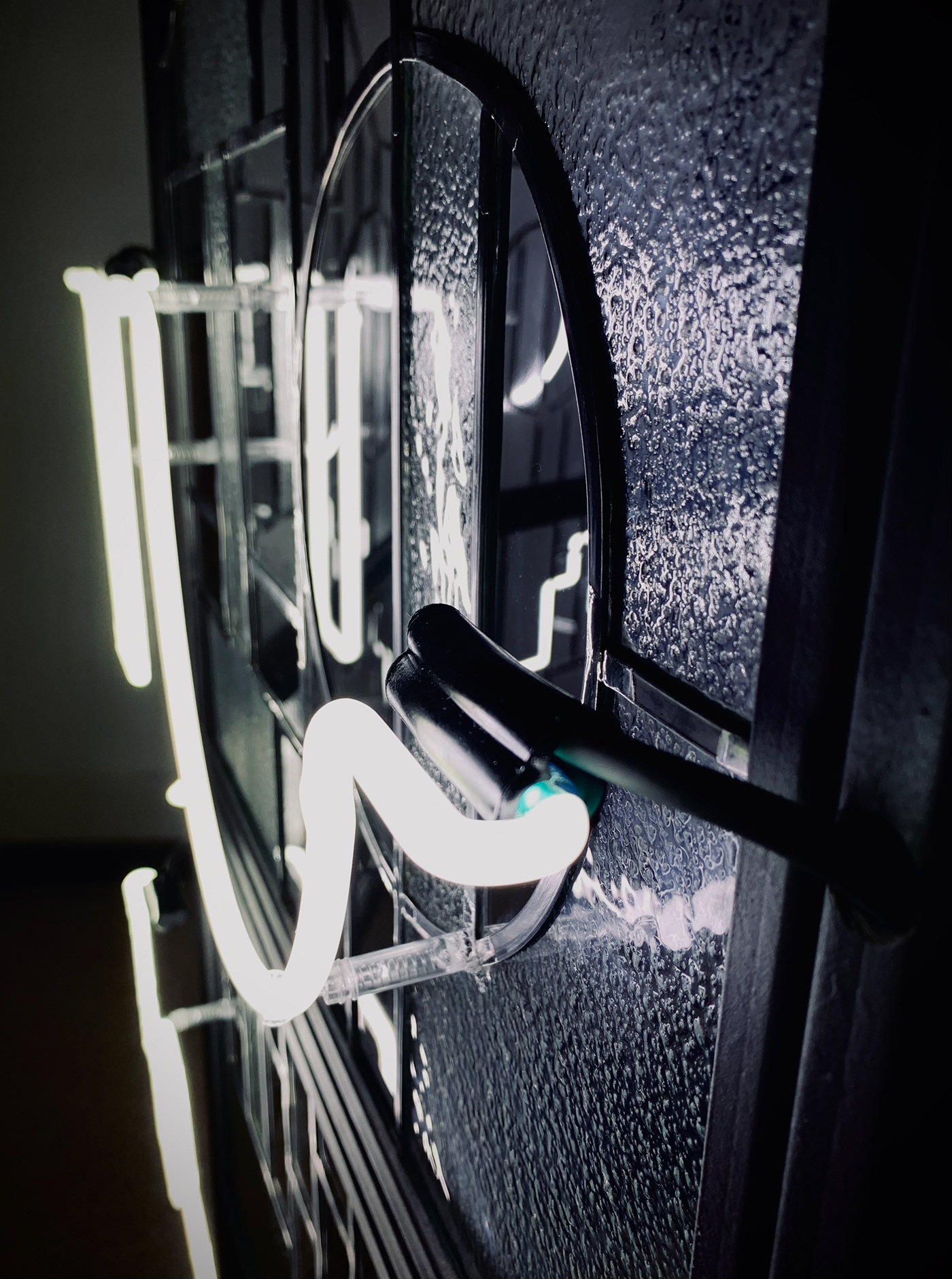





The installation "Refraction" is a spatial form made in the classic stained glass technique, neon, with a steel structure with architectural characteristics. The assumption of the work was to build an installation using the luminous values of neon - as artificial and natural light passing through colorless stained glass creating specific refractions of light. The work consists of ten individual segments connected into one compositional system, creating an artistic system that, depending on the needs, can be composed in various ways and given different shapes. In implementing it, I decided to use the form of a regular eleven-angle with one open wall, which, in my opinion, brings out the most visually attractive layout and also makes it possible to enter the composition inside.
The structural element of the work is a steel frame, which is a support structure for the stained glass windows, but also serves as a spatial composition arrangement. The base is covered with a metal sheet, which creates a weight that is to enhance the contrast and the lightness of the upper part of the composition.
Below the stained glass sections I have placed a modest composition of steel bars, which are a minimalist and visual continuation of the stained glass line. The upper part of the segment has special guides and frames that allow you to safely place and hold all the elements of the stained glass window.
The stained-glass window itself is classic and made using the traditional method of using lead profiles. Designed as a geometric composition, it is supposed to refer to Art Deco. I used one type of glass - float - in two textures, smooth and burnt on a chalk ballast. The neon mounted on the stained glass windows consists of right angles and semicircles - it matches the lead pattern located below it. I chose white light argon to fill the glass tubes, and I used phosphor coated tubes. The inspiration to create such a non-obvious combination were the works created at the Bauhaus school, and in particular the thoughts of Walter Gropius' works on the functions of utility and aesthetics of art. When creating my diploma, I tried to break away from the obvious purpose of stained glass and neon and give them a new character, transforming them into a coexisting autonomous object. I was also inspired by the philosophy of the Art Deco trend, creating without an unnecessary ideological or interpretive envelope. The designed object is to bring art closer to people, pulls the stained glass and neon from height to the level of our eyes.
The structural element of the work is a steel frame, which is a support structure for the stained glass windows, but also serves as a spatial composition arrangement. The base is covered with a metal sheet, which creates a weight that is to enhance the contrast and the lightness of the upper part of the composition.
Below the stained glass sections I have placed a modest composition of steel bars, which are a minimalist and visual continuation of the stained glass line. The upper part of the segment has special guides and frames that allow you to safely place and hold all the elements of the stained glass window.
The stained-glass window itself is classic and made using the traditional method of using lead profiles. Designed as a geometric composition, it is supposed to refer to Art Deco. I used one type of glass - float - in two textures, smooth and burnt on a chalk ballast. The neon mounted on the stained glass windows consists of right angles and semicircles - it matches the lead pattern located below it. I chose white light argon to fill the glass tubes, and I used phosphor coated tubes. The inspiration to create such a non-obvious combination were the works created at the Bauhaus school, and in particular the thoughts of Walter Gropius' works on the functions of utility and aesthetics of art. When creating my diploma, I tried to break away from the obvious purpose of stained glass and neon and give them a new character, transforming them into a coexisting autonomous object. I was also inspired by the philosophy of the Art Deco trend, creating without an unnecessary ideological or interpretive envelope. The designed object is to bring art closer to people, pulls the stained glass and neon from height to the level of our eyes.


